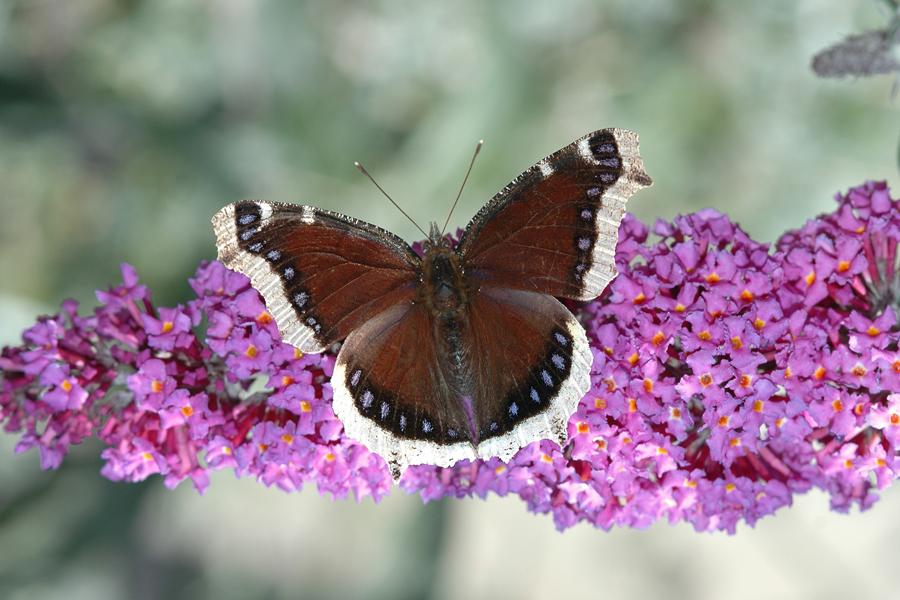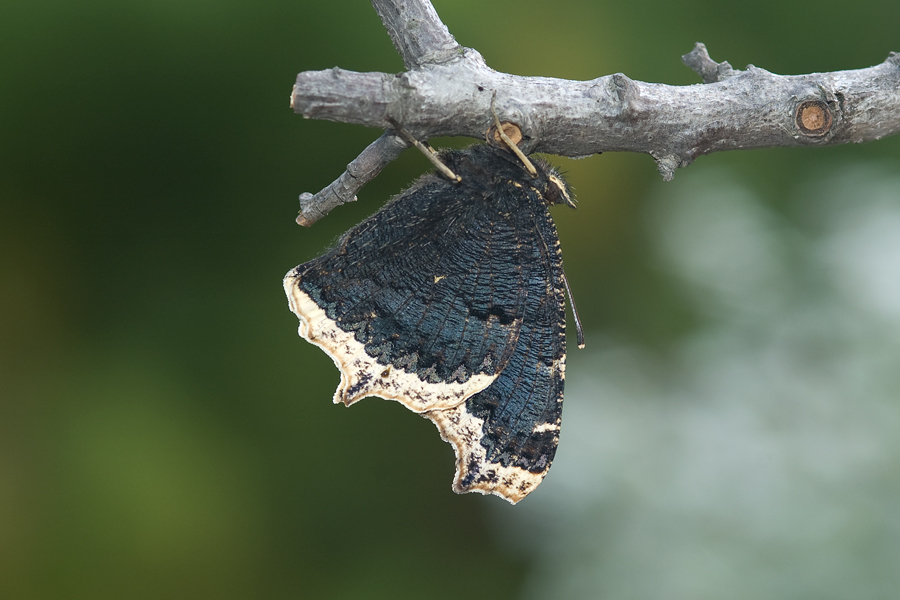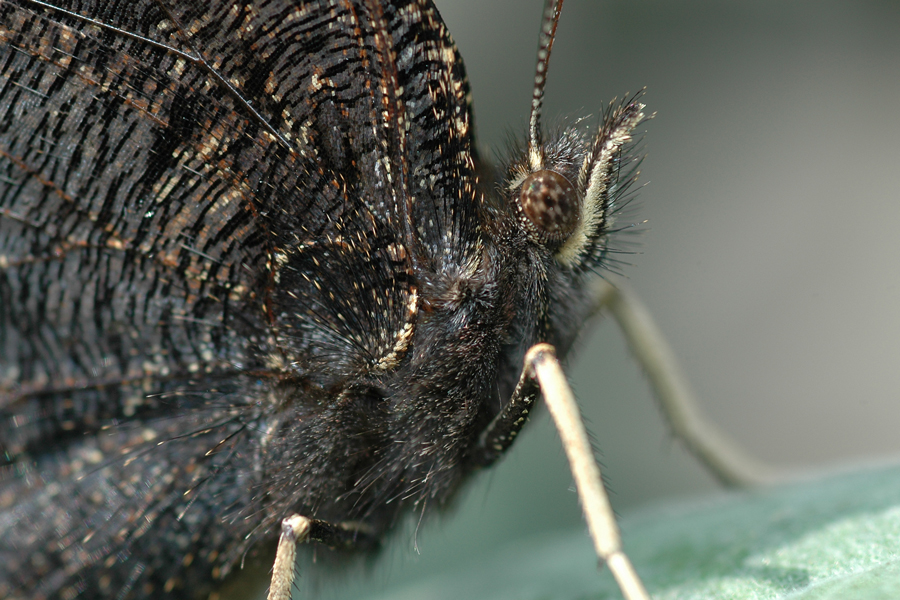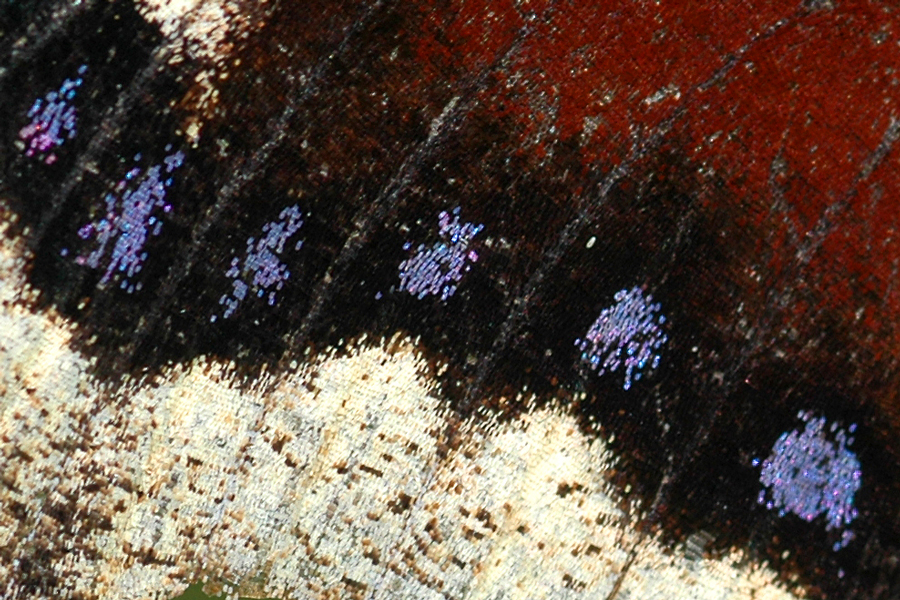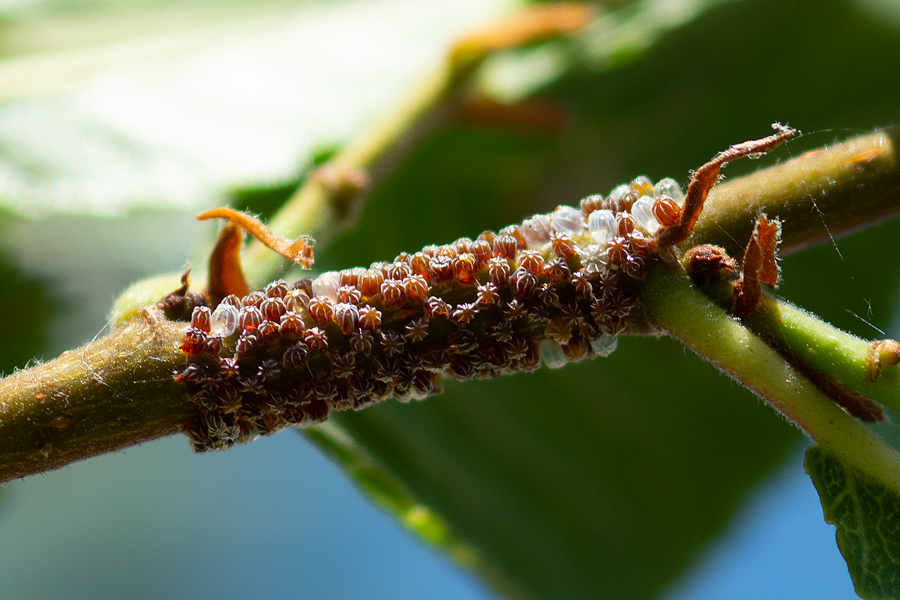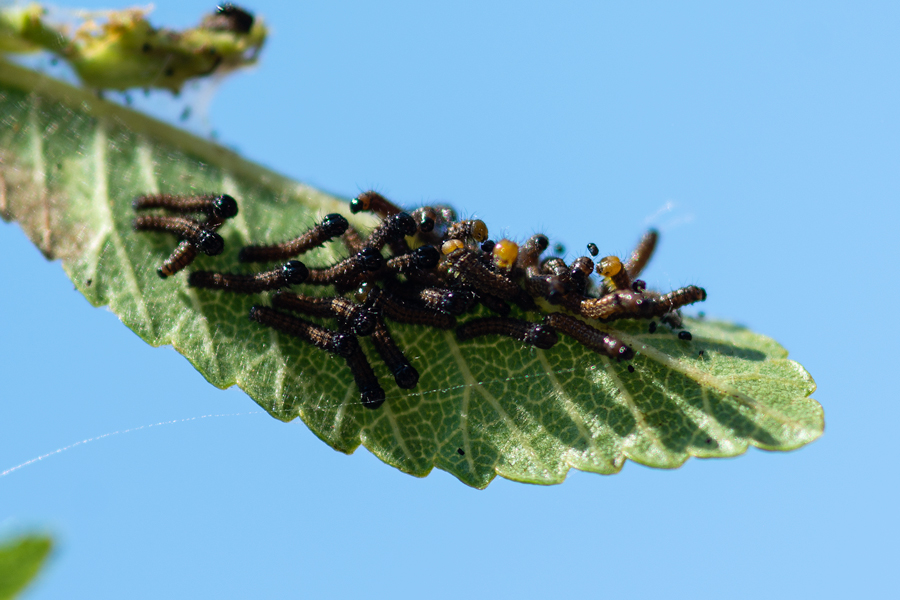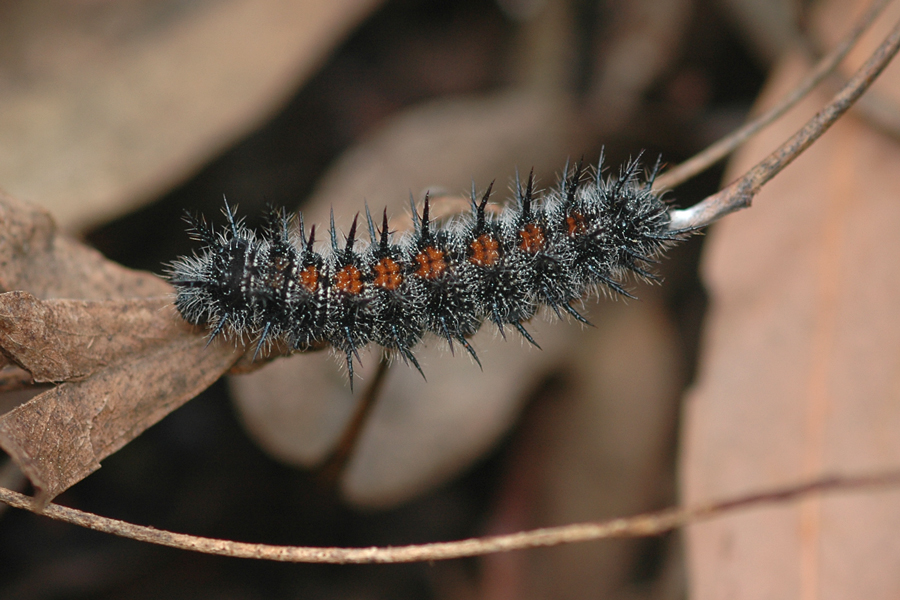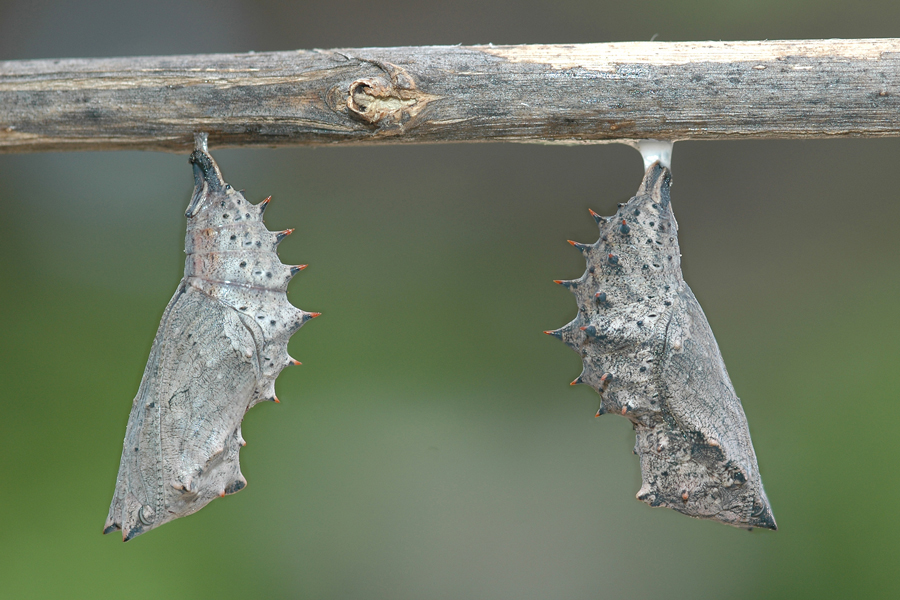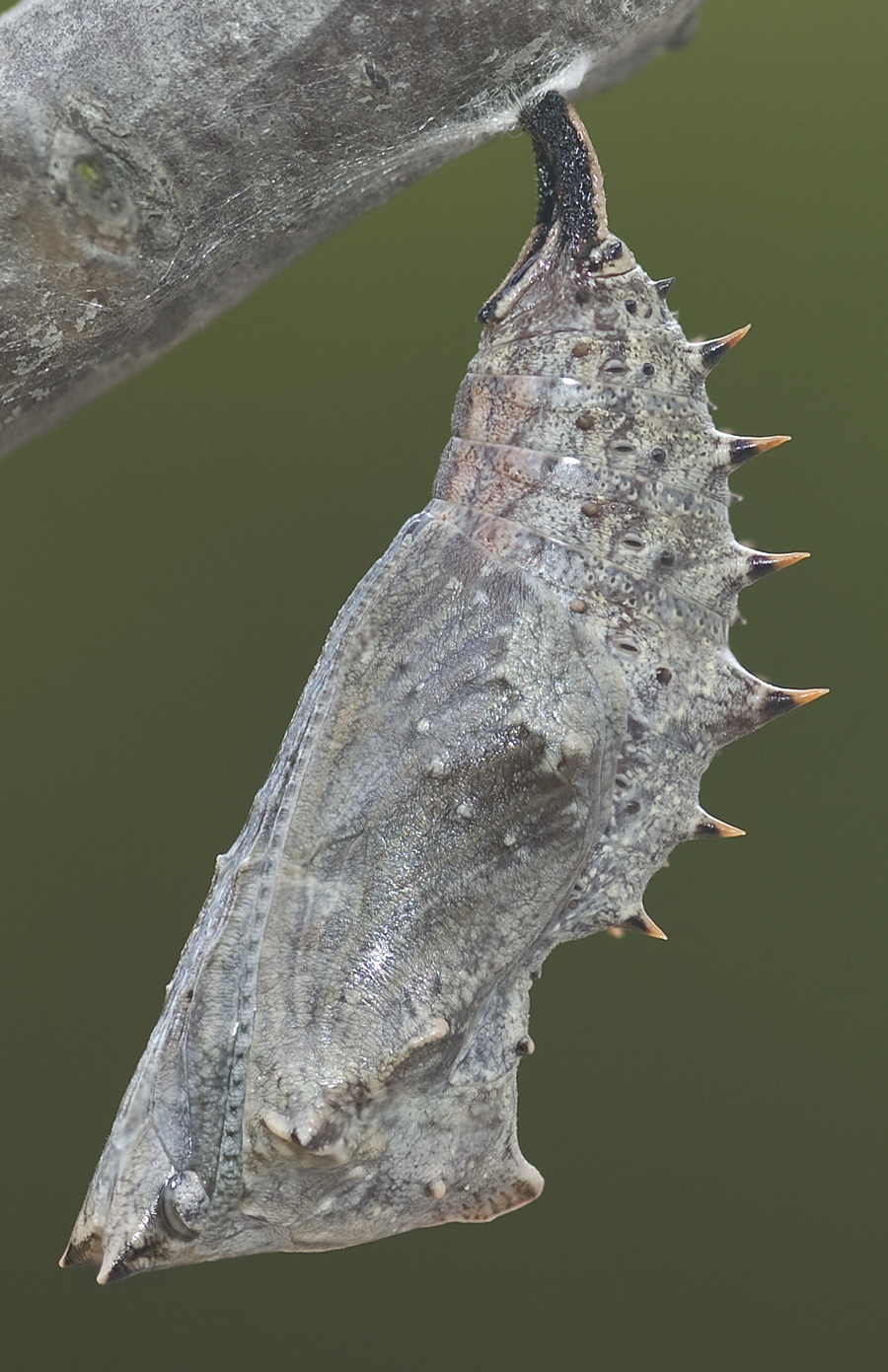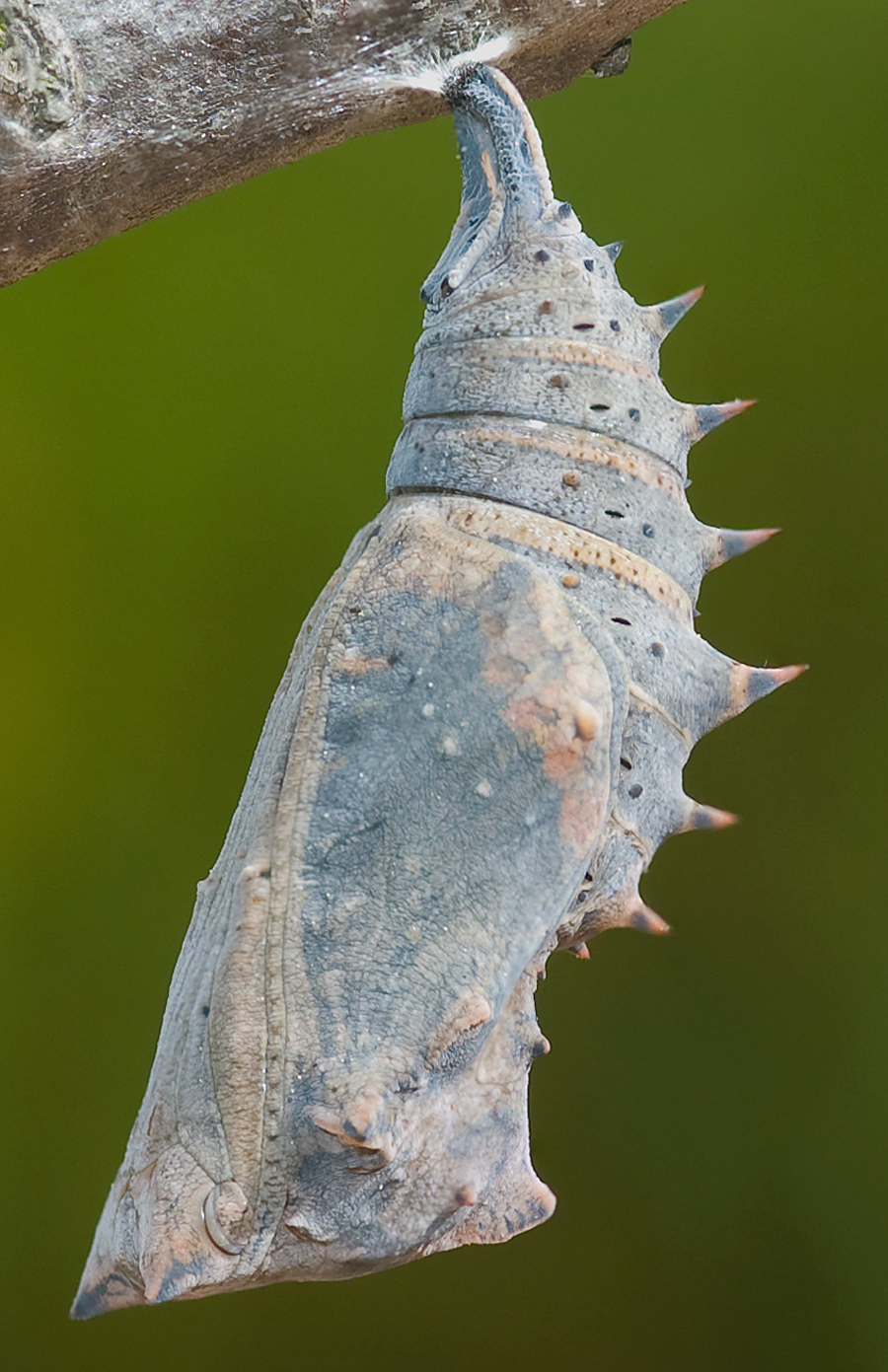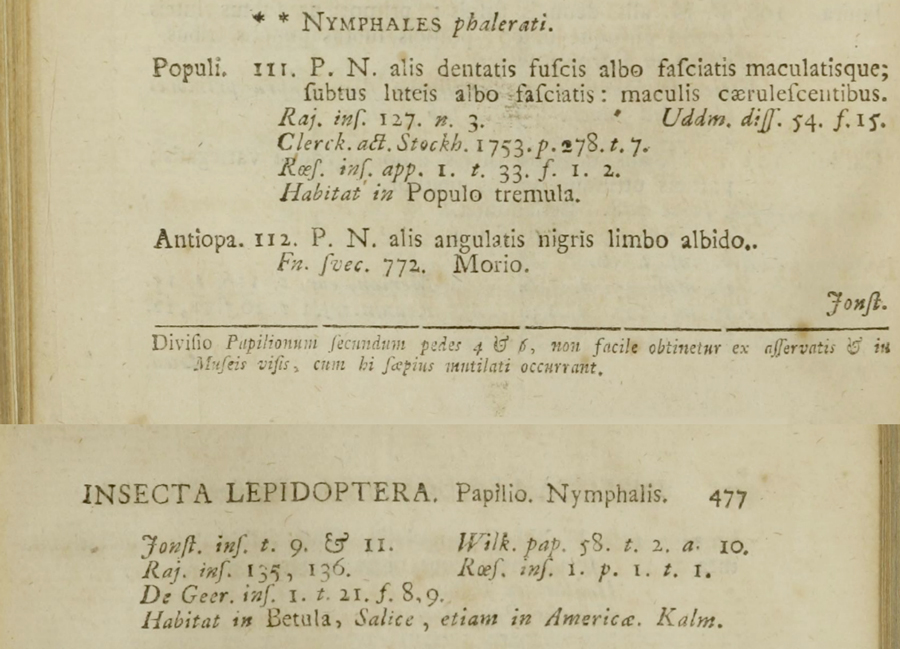Nymphalis a. antiopa
Mourning Cloak
A widespread and well-known butterfly, and one of my favorites. It overwinters as an adult and can live a long time - perhaps a year - in that stage. Males patrol and I've found it to be a species that will perch on my arm or head in my yard, where I put in a chinese elm so I can raise them. Larvae are gregarious, and apparently birds find them delicious.
Nymphalis antiopa was named by Linnaeus in 1758, with a Type Locality in Sweden. We call it a mourning cloak in the USA; in the UK (where it is said to be uncommon) it is a "Camberwell beauty".
A mourning cloak, Nymphalis antiopa, in my garden. May 29, 2006.
Mourning cloak raised in my backyard in Long Beach the day it emerged, April 9, 2011. It came from the pupa at the bottom of this page.
Close-up of a mourning cloak in my garden, May 17, 2006.
Dorsal close-up, also in my garden, May 17, 2009.
A cluster of eggs from a mourning cloak from the same branch as the tree below in my garden. July 22, 2018.
Early instar larvae on a chinese elm leaf in my garden in Long Beach. I planted this tree just for this species. July 22, 2018.
Larva of a mourning cloak, El Dorado Park in Long Beach, March 16, 2011.
Mourning cloak pupae (chrysalises). I found these at El Dorado Park in Long Beach, March 19, 2011.
Another mourning cloak pupa. This one is from a larva that I found at El Dorado Park same day as above, and it pupated two days later.
The same mourning cloak pupa the day before emergence, April 8, 2011. It spent 19 days in the pupal stage.
Nymphalis antiopa was described by Linnaeus in the famous 10th Edition of his Systema naturae, from 1758. The name has stood the test of time.
©Dennis Walker
